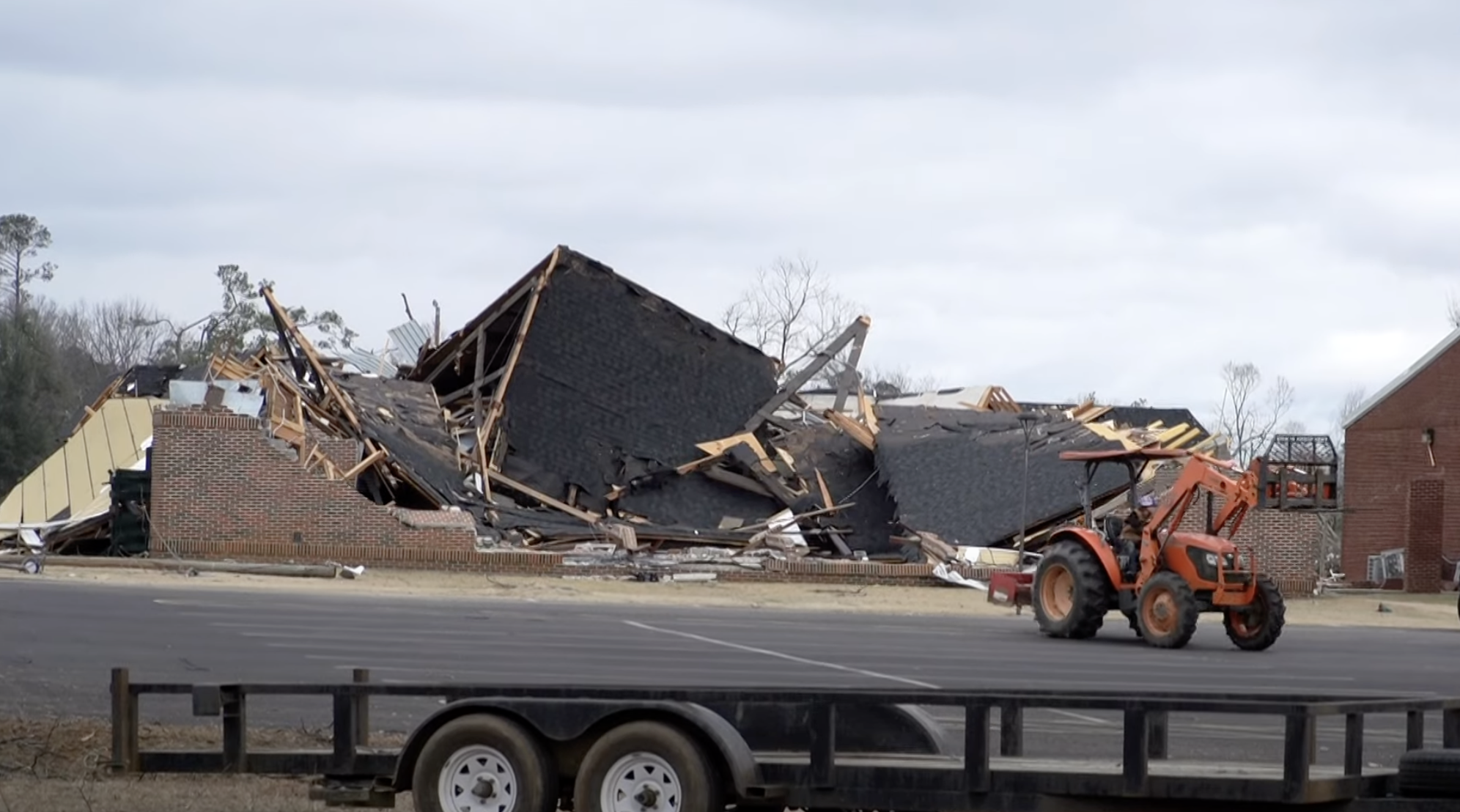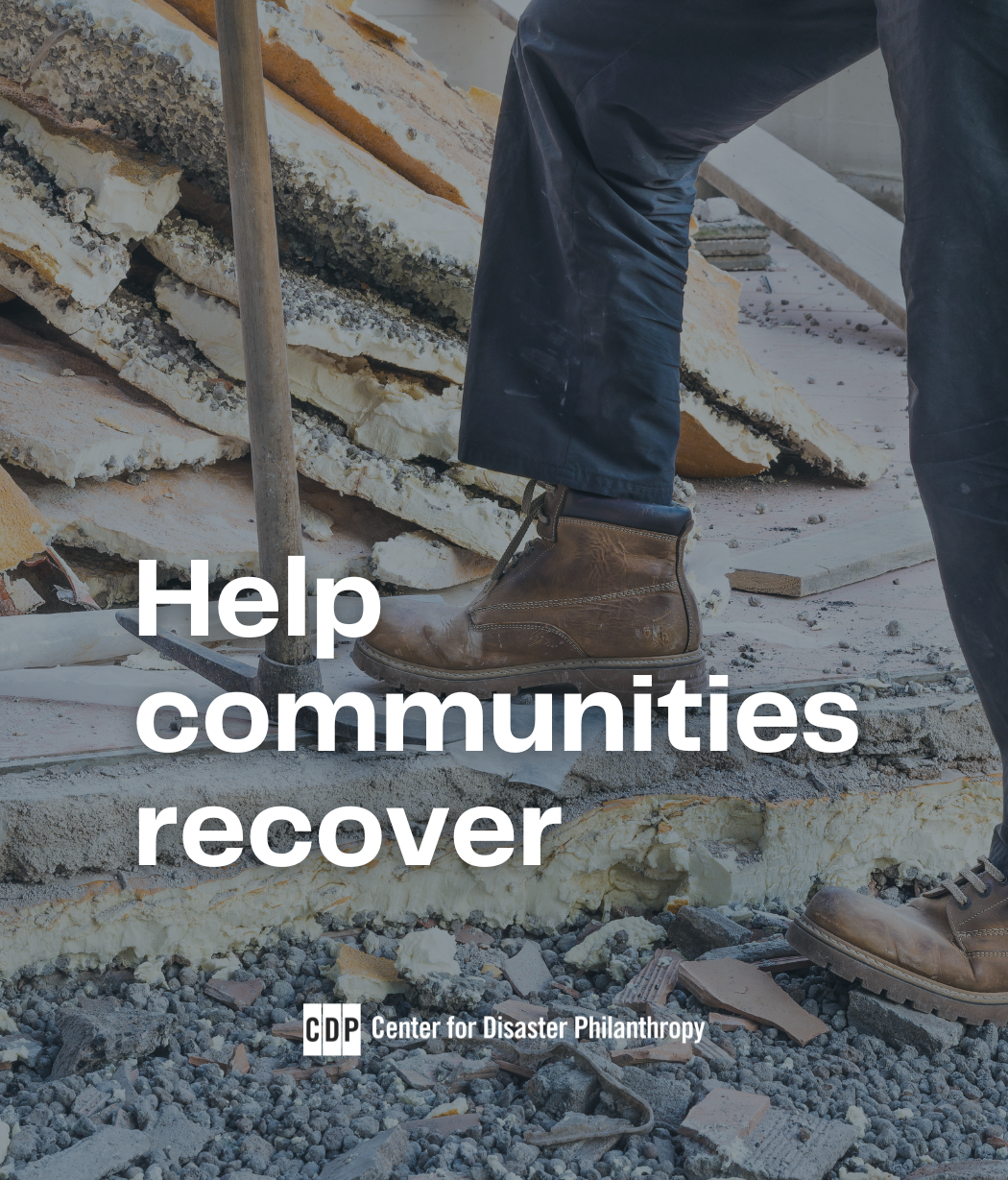What we’re watching: Weekly disaster update, January 17

We know all too well that disaster can strike at any time, in any place in the world. Some disasters make headlines; others do not. Here at the Center for Disaster Philanthropy, we keep an eye on the status of disasters worldwide and compile a list of the ones we’re tracking weekly, along with relevant disaster-related media coverage.
Here’s what we’re watching for the week of Jan. 16, 2023.
New or Emerging Disasters
Tornadoes – Alabama and Georgia: On Jan. 12, extreme weather and tornadoes left behind a path of destruction in the two southeastern states. In Alabama, the tornadoes resulted in the deaths of at least nine people, with two others killed in Georgia. President Biden approved disaster declarations for affected counties in Alabama and Georgia.
On Jan. 15, the National Weather Service (NWS) confirmed nine Alabama tornadoes, including an EF-3 named the Old Kingston-Lake Martin Tornado that affected multiple counties and killed seven people in Autauga County. The tornado brought estimated peak winds of 150 miles per hour, and its path length was 76 miles, making it Alabama’s ninth-longest tornado track on record. In the city of Selma, which was hit by an EF-2 tornado, residents offered support to one another, continuing a long tradition of the city coming together after tragedy.
Tornadoes and straight-line winds caused damage and power outages across north Georgia and metro Atlanta. On Jan. 16, the NWS confirmed eight tornadoes in Georgia, including an EF-3 that traveled across Pike, Spalding and Henry counties. Manufactured homes were damaged in Henry County, Georgia, and the community was helping one other with the cleanup.
Although manufactured housing can be physically vulnerable to tornadoes, it also represents an affordable and accessible housing option. Balancing safety with the benefits of manufactured homes can be a challenge. On Oct. 12, CDP hosted a webinar about the increased risks manufactured homes face and the role they play in disaster recovery.
Previous/Ongoing Disasters
Storms – California: More than two weeks of storms have wreaked havoc across the state from Los Angeles to the Monterrey Peninsula, about 100 miles south of San Francisco. The state has endured nine atmospheric river storms since Christmas, with a 10th forecasted for Jan. 18, although that storm is expected to be weaker. Individually, the storms may not have been as bad but taken together, they produced devastating flooding and landslides. On Jan. 16, the California Geological Survey said they had counted more than 500 landslides across the state since Dec. 30.
On Jan. 16, California Governor Gavin Newsom’s office said at least 20 people died due to the storms, which is more than the number of people killed in wildfires in the past two years. In San Joaquin County, 175 residents of a manufactured housing park were evacuated on Jan. 15 due to flooding. In addition to the damage to homes and businesses, crews are expected to need weeks to repair crumbling roads, clear debris and fix sinkholes. On Jan. 15, President Biden approved a disaster declaration, providing disaster assistance to the state and making federal funding available to affected individuals in Merced, Sacramento and Santa Cruz counties.
The storms have helped the Sierra Nevada region to reach more than 200% of its typical snowpack for this time of year, which should ease immediate drought concerns. However, it also could lead to spring flooding as the snow melts. After years without enough water, officials have now been forced to take drastic measures like releasing excess water from reservoirs. With much of the storm’s runoff ending up in the ocean, there is renewed interest in capturing rainfall for dry times.
COVID-19 – United States: A new COVID sub-variant named XBB.1.5 is spreading rapidly in the U.S. The new sub-variant has a mutation that makes it spread more easily. The World Health Organization said XBB.1.5 might contribute to increases in case incidence, but it had low confidence in the assessment since the “growth advantage” estimates are from just the U.S. at this point. According to Centers for Disease Control estimates, 43% of COVID-19 cases in the U.S. in the second week of January were caused by XBB.1.5. However, booster uptake in the U.S. has not been good, and new COVID-19 hospital admissions are now at the fourth highest rate of the pandemic. On Jan. 12, CDP hosted a webinar to discuss how COVID-19 changed the giving landscape over the past three years and explore future needs.
For more, see our COVID-19 Coronavirus disaster profile.
In addition to the disasters listed above, we are actively monitoring the following disasters or humanitarian emergencies. For more information, see the relevant disaster profiles, which are updated regularly.
- Afghanistan Humanitarian Crisis
- Horn of Africa Hunger Crisis
- 2022 Pakistan Floods
- Ukraine Humanitarian Crisis
U.S. Midwest Low-Attention Disasters
The Midwest is regularly faced with low-attention disasters that affect people across the region. CDP’s Midwest Early Recovery Fund (ERF) effectively funds efforts that catalyze equitable disaster recovery.
These are some of the latest disasters and disaster-related news the ERF team is monitoring:
- Some parts of Montana are dealing with flooding, especially among river communities, after significant temperature changes resulted in ice, water and debris flows. In Fishtail, the flooding did not cause injuries, but there was minor damage to homes and businesses.
- Residents of Gould, Arkansas, still feel the effects of early January flooding. Recover is difficult after the area experienced flooding in June 2022. Some affected people remain displaced.
Complex Humanitarian Emergencies – Haiti
Many places worldwide are experiencing emergencies caused by conflict, climate change, drought, famine, economic challenges and other conditions that combine to create a complex humanitarian emergency (CHE). CDP maintains complete profiles on several CHEs, and what CDP considers Level 1 CHEs are profiled in this weekly blog post and tracked.
At the beginning of 2023, Haiti continued to grapple with a complex humanitarian emergency defined by gang violence, a cholera outbreak, food insecurity, outmigration and political instability.
On Jan. 12, Haiti remembered those lost in the devastating 2010 earthquake while lamenting the country’s decline. Historian Matthew Smith called the current situation unprecedented in Haiti’s history.
Last week, the terms of Haiti’s last 10 remaining senators expired, meaning the country is now without a single elected government official. Share on X
Understanding the current situation is impossible without recognizing the history of foreign interventions and how they have shaped Haiti.
After three years without a cholera case, Haiti’s Ministry of Public Health and Population (MSPP, per its acronym in French) reported two confirmed cases in the communes of Cité Soleil and Port-au-Prince on Oct. 2.
From Oct. 2, 2022, to Jan. 7, 2023, MSPP reported 23,044 suspected cases in all 10 departments of the country, including 1,576 confirmed cases, 18,699 hospitalized suspected cases and 464 registered deaths.
At the end of December, Haiti received its first shipment of cholera vaccines since the recent outbreak began. The shipment is a step in the right direction to stem the spread of the disease. However, there may be challenges with distribution.
Rice, black beans, maize and cooking oil, are among the most important foods for poor and middle-income households in Haiti. As of December 2022, the price of all of these food items remained above 2021 prices, as well as the 5-year average. Acute food insecurity remains a concern at the start of 2023.
As the situation worsens within Haiti, more people are risking dangerous sea journeys to seek asylum and opportunities elsewhere in Latin America and the U.S. On Jan. 12, U.S. Customs and Border Protection took into custody 25 Haitians who had traveled by sailboat from Haiti and swam to shore at Virginia Key, near downtown Miami, Florida.
In 2023, humanitarian partners and the government aim to reach 3 million of the 5.2 million people who need humanitarian assistance. Priorities for humanitarians in 2023 include the provision of health and water, sanitation and hygiene services to prevent the spread of and response to the cholera outbreak; food and livelihoods assistance; and the provision of protection services, including psychosocial and health support for children and survivors of sexual violence.
As of Dec. 22, Haiti’s Humanitarian Response Plan had a 57% funding gap.
What We’re Reading
- Disaster Giving Goes Mostly to Immediate Relief, Not Prevention or Long-Term Recovery – The Chronicle of Philanthropy: A new Chronicle review of nine years of data from the Center for Disaster Philanthropy and Candid “shows that the sums flowing to disasters aren’t always going where they are most needed, namely for long-term recovery efforts and ensuring that communities are resilient enough to withstand the growing number of natural disasters caused by climate change.”
- The U.S. had 18 different billion-dollar weather disasters in 2022 – Yale Climate Connections: According to the National Oceanic and Atmospheric Administration (NOAA), the contiguous U.S. endured 18 billion-dollar disasters in 2022, tied for the third-highest number in inflation-adjusted data going back to 1980. NOAA says the number and cost of disasters are increasing due to increased exposure, vulnerability and climate change.
- Unpacking the U.S. Census Data on ‘Natural Disasters’ Part I: Displacement – Place/Resilience: Andrew Rumbach, a Senior Fellow at the Urban Institute, summarizes the latest questionnaire results from the U.S. Census Bureau’s Household Pulse Survey, which includes questions about the impact of living through disasters. While the questionnaire could be improved, Rumbach shares insights on what can be gleaned on disaster and displacement.
- Breaking the Silence Report: Ten humanitarian crises that didn’t make headlines in 2022 – CARE: The international humanitarian organization CARE analyzed the humanitarian crises that received the least media attention in 2022. For the first time in the report’s history, all of the most under-reported crises are now in Africa. Natural hazard-fueled disasters, exacerbated by climate change, combined with persistent conflict, the lingering effects of the COVID-19 pandemic and economic crises worsened the humanitarian situation in many of these countries.
- Taliban ban on women workers hits vital aid for Afghans – Associated Press: Women workers are critical to humanitarian operations in Afghanistan, and last month’s ban on Afghan women working in non-governmental organizations (NGOs) by the Taliban already has consequences. As NGOs suspend or scale back their operations, they warn that thousands of Afghans will miss out on lifesaving humanitarian assistance.
- Uncertainty ahead for US food aid as farm bill negotiations begin – Devex: At a time when global hunger needs have never been higher, humanitarians are preparing for a tense year of negotiations on the 2023 farm bill, a piece of legislation that governs a list of programs including U.S. international food assistance programs.
Every year on Jan. 1, Haitians commemorate their country’s independence by eating a beloved pumpkin soup called soup joumou. The dish is rooted in Haiti’s liberation and celebrates the slave revolt that created the world’s first free Black republic in 1804. Here is a brief history and soup joumou recipe.

